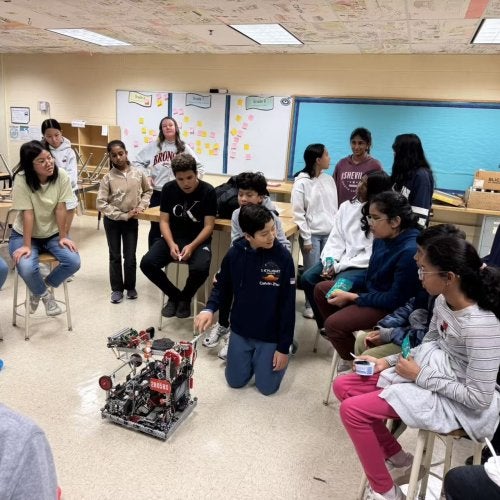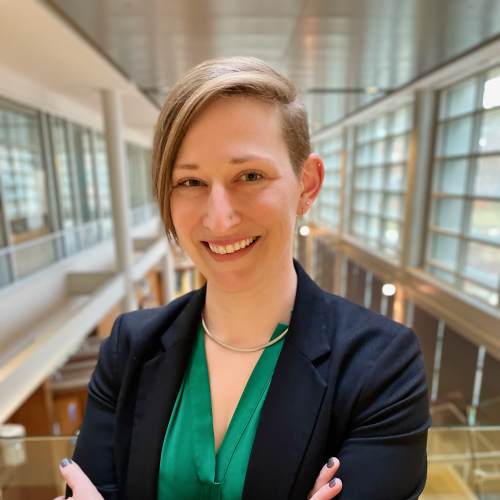
COLLEGE PARK, MD (November, 2016) – Drew S. Fagan, Ed.D., assistant clinical professor in the University of Maryland College of Education, was nominated to join the Every Student Succeeds Act (ESSA) Stakeholder Engagement Committee in 2016. Nominated to the committee by Dr. Karen Salmon, the Maryland state superintendent of schools, Dr. Fagan and other committee members will help develop a report on ESSA implementation, which is intended to help the state craft a plan for implementing the legislation that meets the needs of diverse stakeholders.
Dr. Fagan, who is the associate director of the Multilingual Research Center and a faculty member in the Department of Teaching and Learning, Policy and Education, brings an important perspective to the ESSA committee due to his background teaching teachers, English learners and foreign languages.
[This interview has been edited, reorganized, and condensed.]
Could you provide a bit of a background on the ESSA? How does it relate to the No Child Left Behind Act?
The Every Student Succeeds Act (ESSA) was signed into law by President Obama in 2015. This measure reauthorizes the Elementary and Secondary Education Act (ESEA) of 1965. The ESSA takes into account the successes and difficulties of the No Child Left Behind (NCLB) Act of 2002. NCLB was trying to put forward the idea that all students regardless of language, class, etc. are entitled to a fair education and be held to the same standards. In theory, it is a fantastic idea but it is difficult in practice.
NCLB contained federal level rules and standards that were passed onto the states, so that whether you were in Maine or Arizona the standards were similar. However, due to recognizing that different states have different needs based on their student populations, the ESSA legislation was developed to address diverse students’ needs and to let the states have a role in meeting the needs of their students. Some ideas from NCLB are still included, such as that all students are entitled to fair and equal access to education. One key difference in ESSA is that accountability is being left up to the states, whereas with NCLB, accountability was addressed at the federal level.
What is your role in the ESSA Stakeholder Engagement Committee?
My knowledge and background relates most to the ESSA legislation components that are called Title 2 and Title 3. Title 2 is focused on teacher education. My focus is on pre-service teachers and in-service teachers who need professional development. The Title 3 component of ESSA pertains to English learners and covers such issues as whether there are ESOL programs, what type of assistance English learners are receiving, and whether teachers are boosting students’ first language and teaching them academic language. In Maryland, we provide English as second language (ESOL) classes and immersion programs.
One focus of my work, which I bring to the ESSA committee, is preparing all teachers to meet the needs of English learners, not just ESOL teachers. One thing we learned from NCLB is that some English learners may exit out of services like ESOL classes, but still struggle with academic English.
Through the programs I head at University of Maryland as the coordinator of the TESOL Outreach Program, I teach other teachers, such as math and social studies teachers, to help those students who are no longer ESOL students but still struggle academically. I’m in charge of setting up partnerships with local school districts to prepare teachers to work with English learners, ESOL and non-ESOL teachers alike. Most of our current partnerships focus on non-ESOL teachers. For example, we currently have a 5-year partnership with Prince George’s County Public Schools to provide a 12-credit post-baccalaureate Certificate in TESOL to non-ESOL teachers.
What work is the ESSA Stakeholder Engagement Committee engaged in?
Over the next year, we are working to develop a report that will inform the Maryland State Department of Education (MSDE) plan for ESSA. On the committee, I speak to the needs of English language learners in K-12 classrooms and teacher education at higher education institutions. The stakeholder committee brings together people from all different perspectives, such as the Parent Teacher Association and the teachers’ unions. It is a huge deal that we are all talking to each other and crafting a report that will help inform the state of Maryland’s plan for ESSA implementation.
Once the ESSA state plan is finished in summer of 2017, the federal government has 120 days to review and provide comments for revisions before fully approving it. Once fully approved, Maryland is able to proceed with implementation.
How might the presidential election influence the implementation of ESSA?
ESSA was approved by President Obama, so the next president could start trying to adapt or, potentially, overturn the Act, depending on which parties are in Congress. NCLB came into law under President Bush; a lot of people were not happy with it either initially or as time proceeded. Neither Hillary Clinton nor Donald Trump has said much about the ESSA legislation. What happens in January, 2017 when the new president takes office might influence whether there will there be a stall in ESSA implementation or whether the next president will want to keep things status quo.
One important note is that the implementation of Common Core standards is up to the states, as ESSA ends the federal mandate for states to have to adopt Common Core standards. Some states might keep Common Core and some might nix it; Maryland’s version of the Common Core, the College and Career Readiness Standards, is currently being reviewed in light of ESSA.
What type of questions come up in regards to English learners and the ESSA?
In the past ten years, the number of English learners in Maryland has skyrocketed. This is the first time where we can take a federal law and adapt it to meet the state’s need. This past ESSA Stakeholder Engagement Committee meeting, we discussed accountability; for instance, in regards to various state assessments, when should English learners take those assessments?
There is a strong influence of STEM in the education field now--how does that factor in? Should STEM be emphasized more? How does that work with English learners or special education students or the gifted and talented population?
How would you describe the English learner student population in the state of Maryland?
The DC Metro area tends to attract immigrant groups, with a lot of the populations historically residing in Montgomery and Prince Georges County, as well as in Baltimore city. What we’re seeing with the trends in Maryland is that because of how expensive the DC Metro area is getting, many immigrants are going to the Eastern Shore, Frederick County and other areas where things are less expensive or where there are relevant jobs. The immigrant populations are also changing. Though there continues to be expansive Spanish-speaking immigrant communities, we’re now seeing more immigrant groups with diverse linguistic backgrounds from areas such as Western Africa and Southern Asia.
How do English learners influence the needs of teacher education programs or approaches?
It’s important that the ESSA Stakeholder Engagement Committee considers how an increase in the number and linguistic diversity of English learners affects teachers in the classroom. Through the TESOL programs I coordinate at the University of Maryland, we are working with teachers to understand what the needs are for teachers in the classroom, such as in a specific content area. It’s important to help teachers become aware of the needs that arise when working with English learners. When you dissect different types of writing, there are very specific ways of using English language that vary whether one is writing a science report or a newspaper article. I work to help make all teachers aware of how their content areas affect and are affected by the different learner populations in Maryland classrooms.
-end-
For more information on the College of Education, visit: www.education.umd.edu
or contact
Audrey Hill, Associate Director of Communications, at: audreyh@umd.edu



